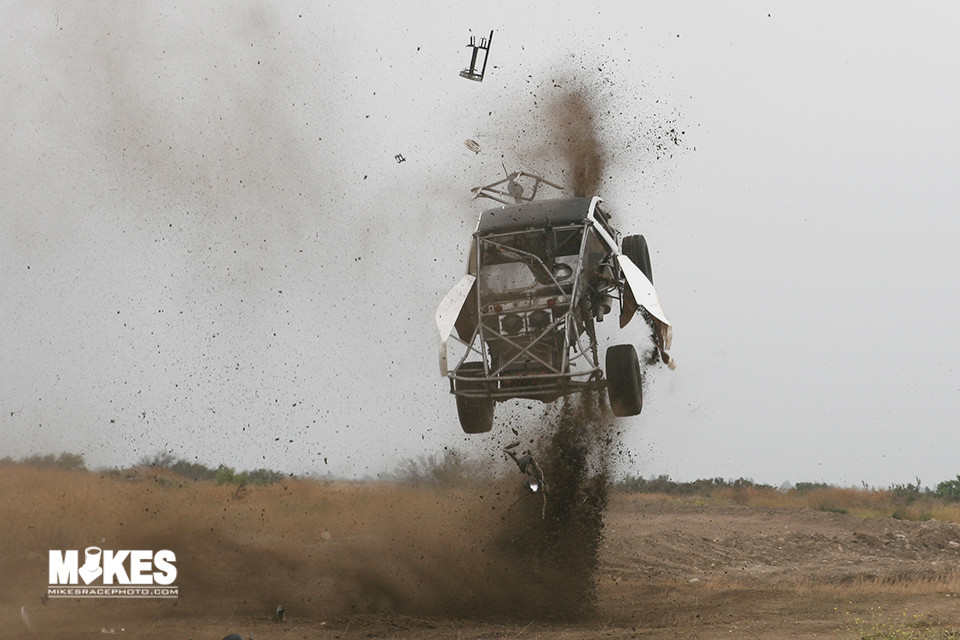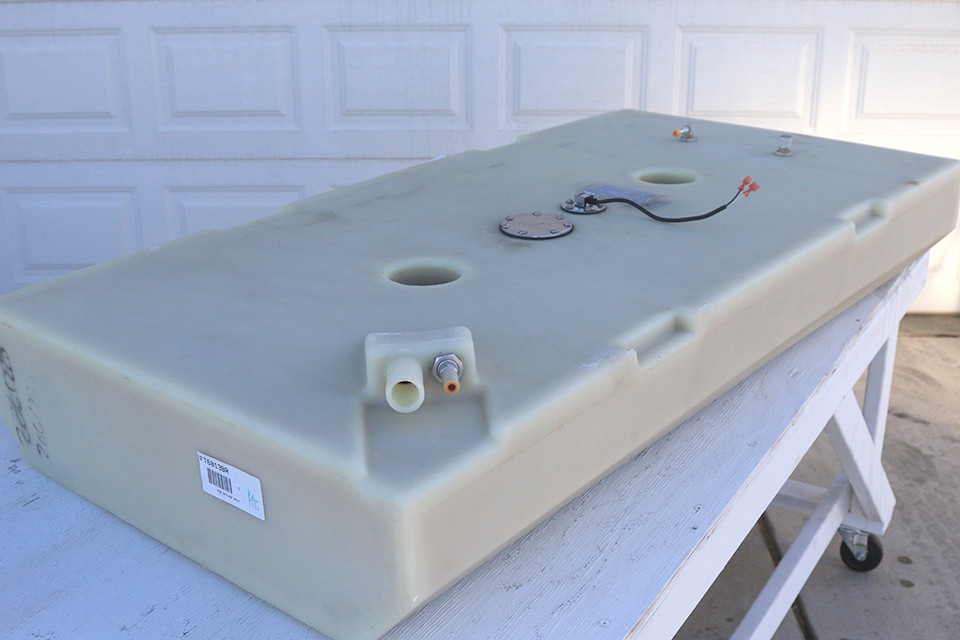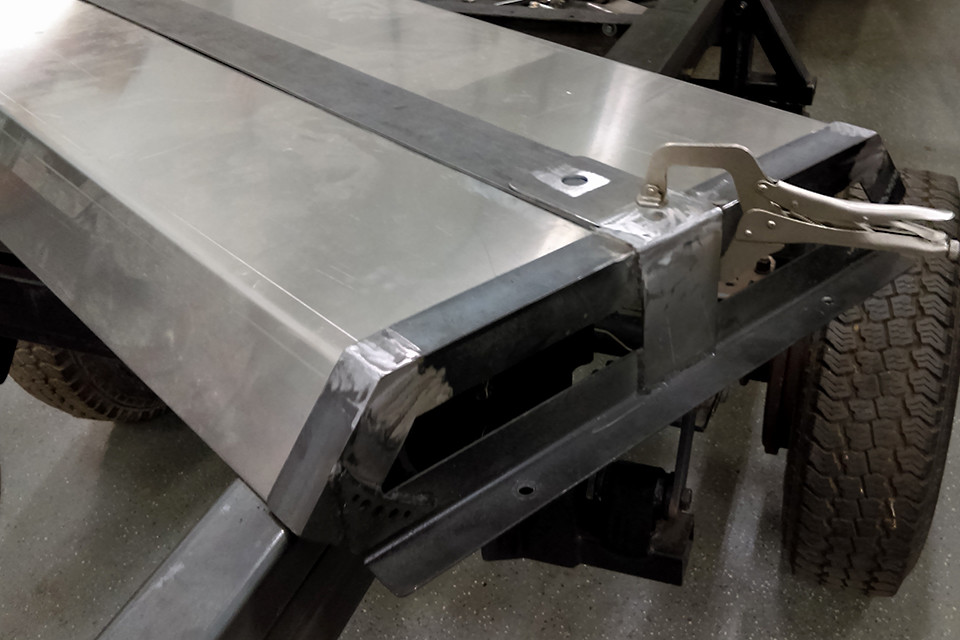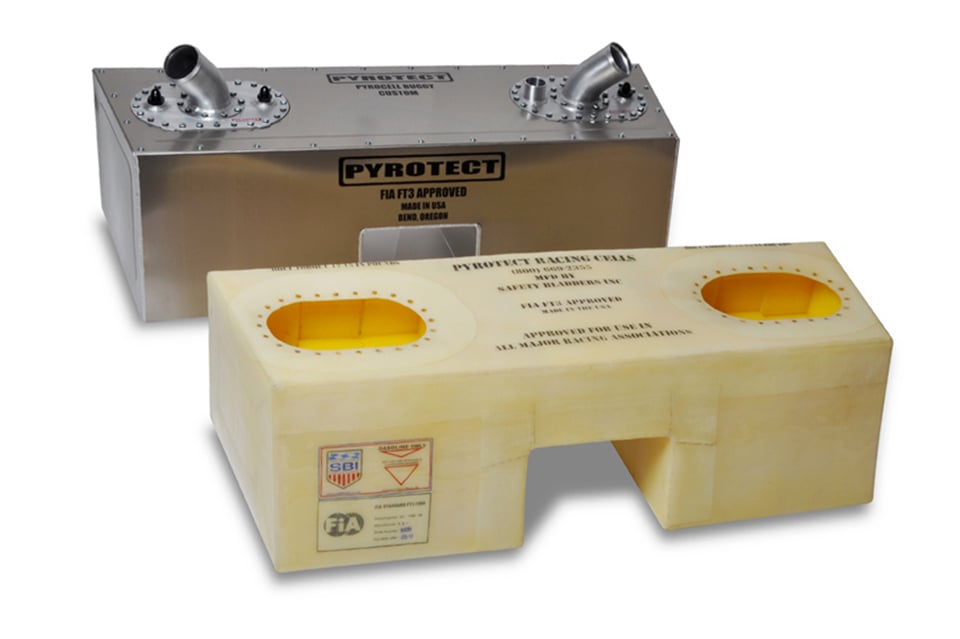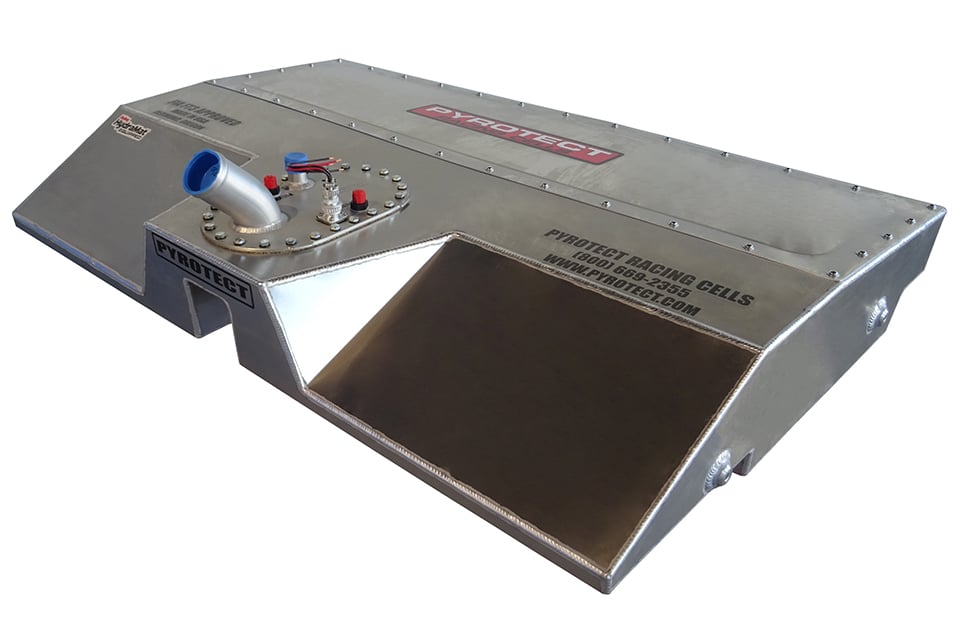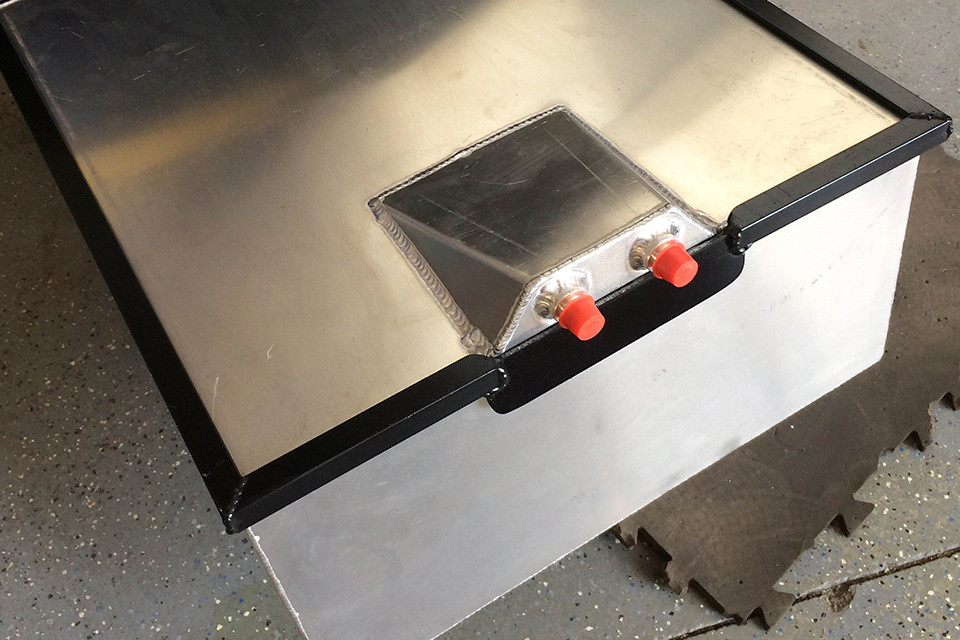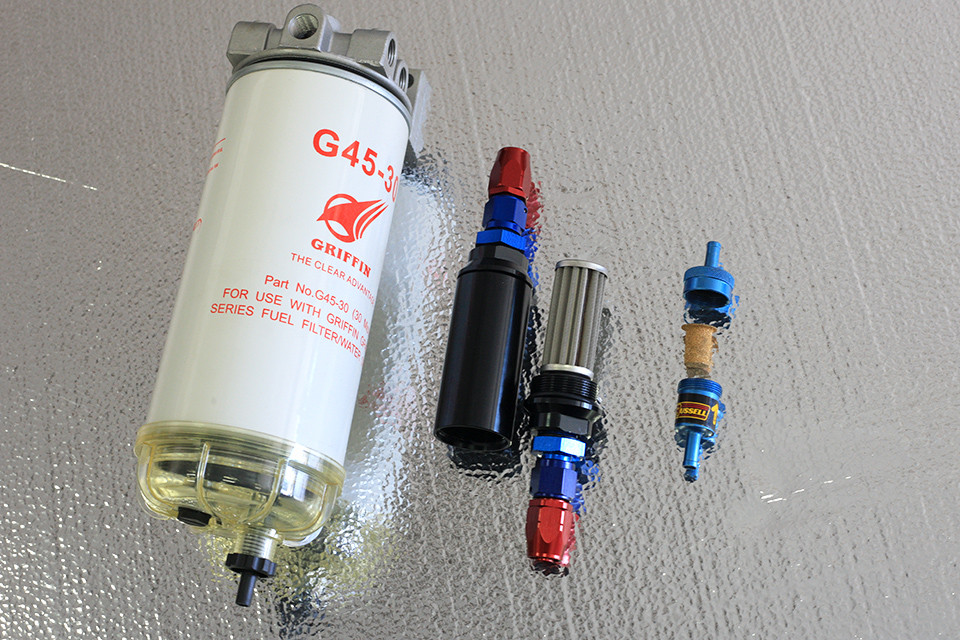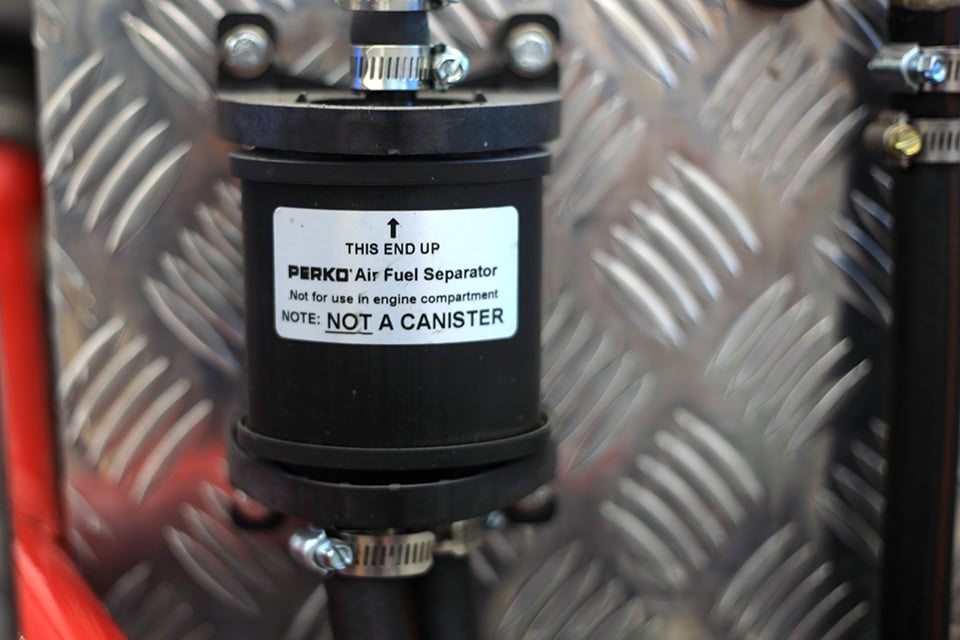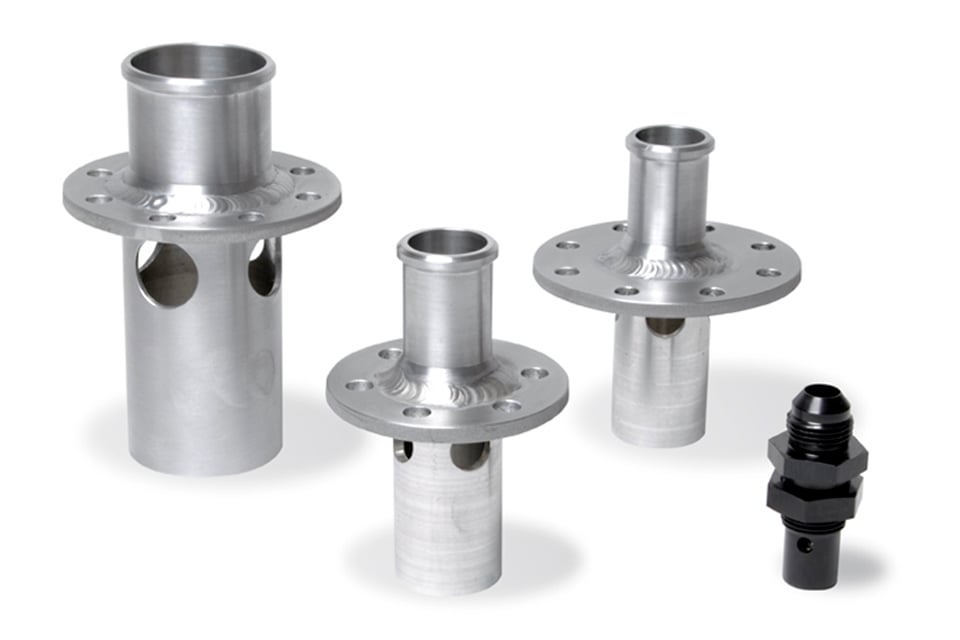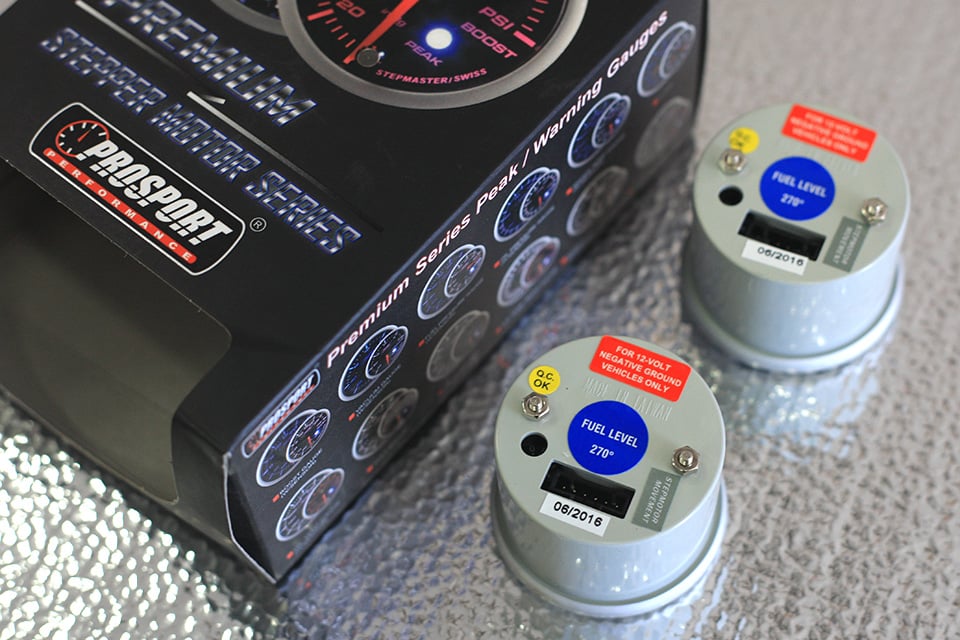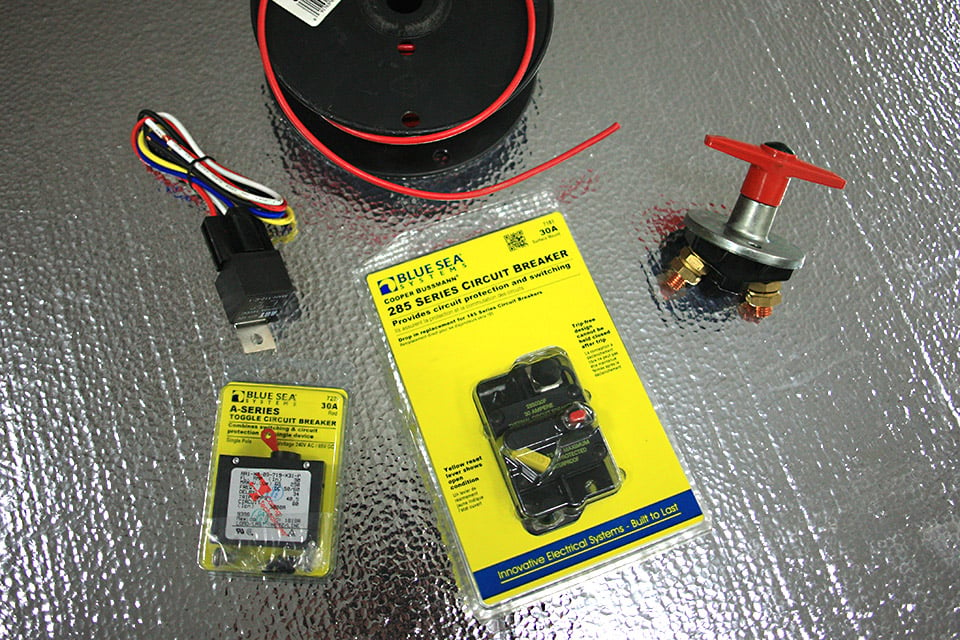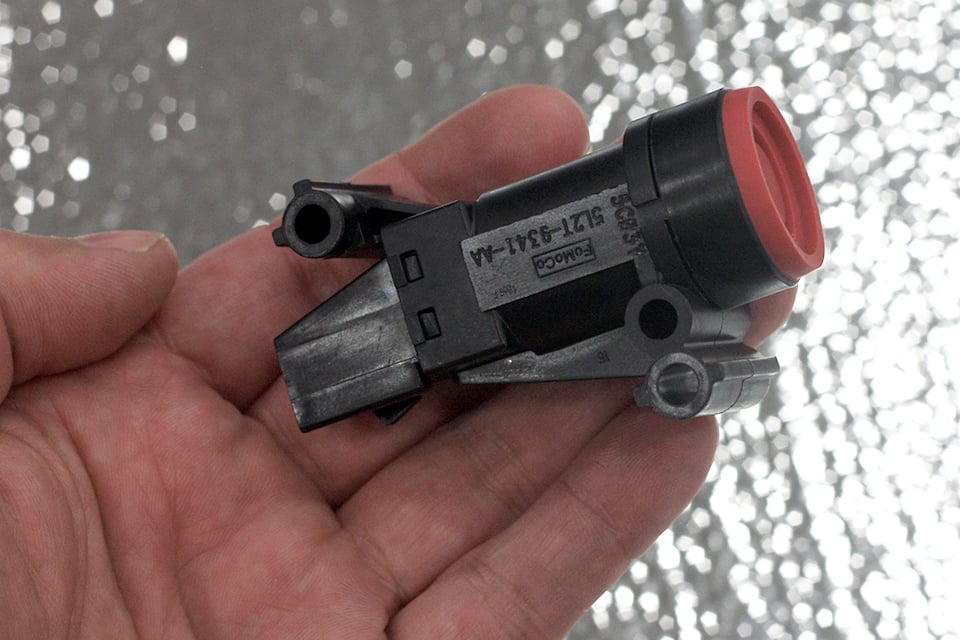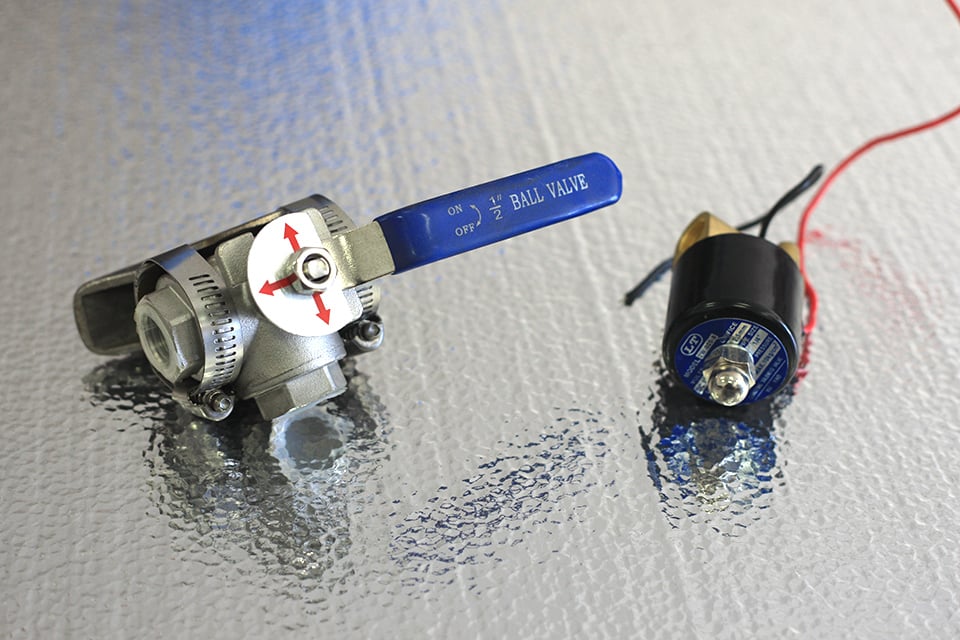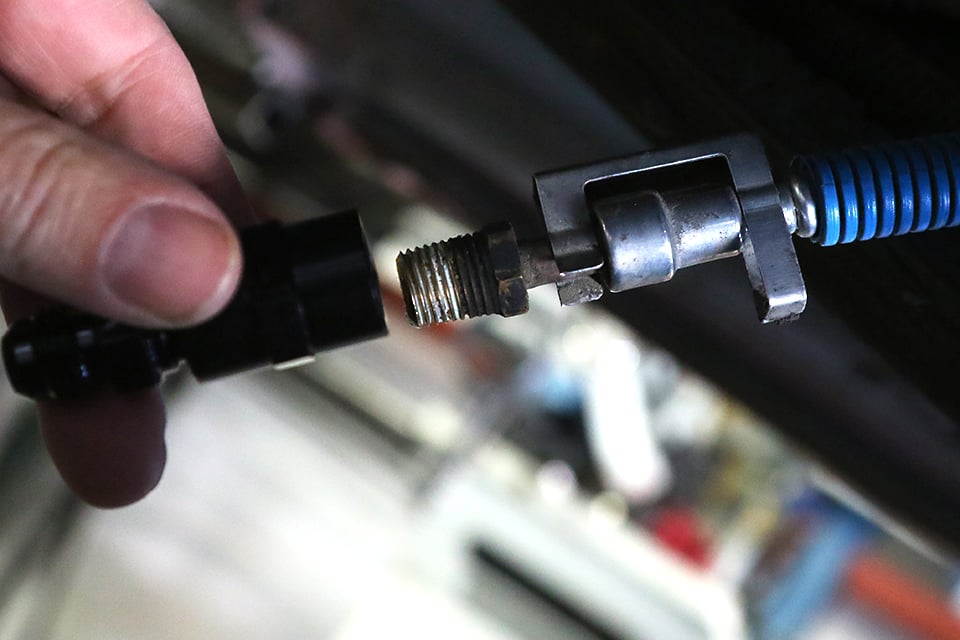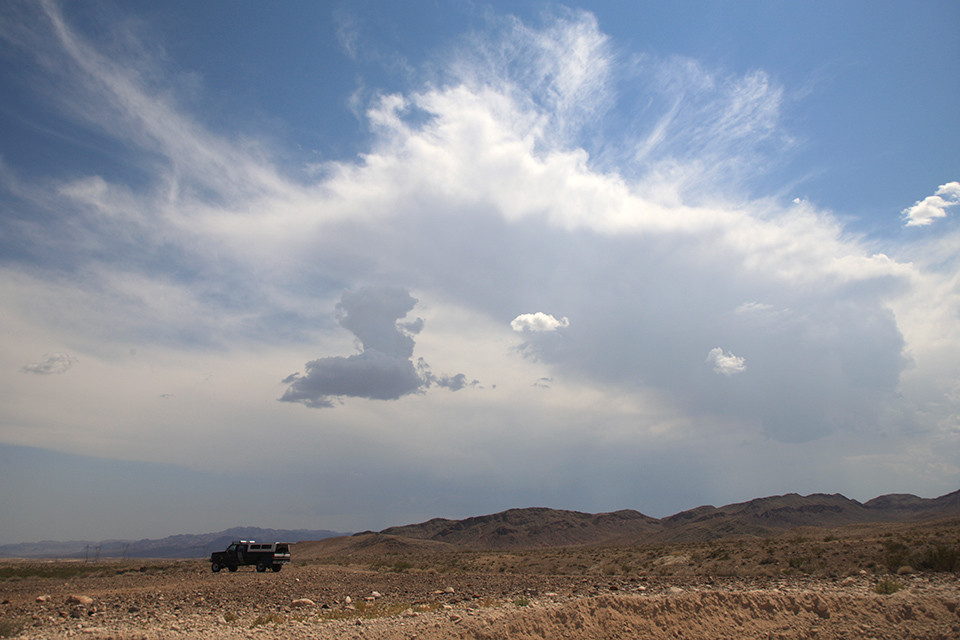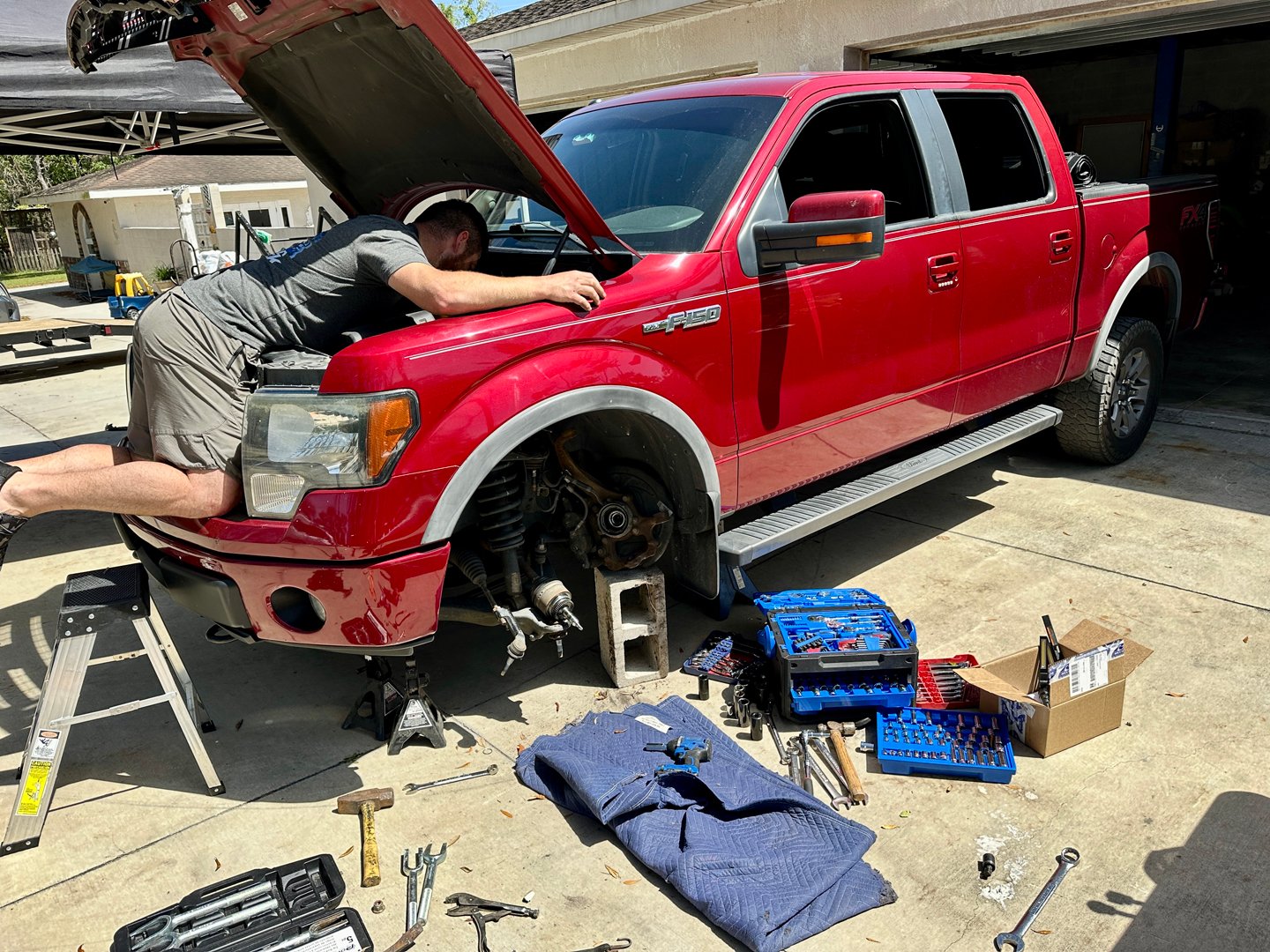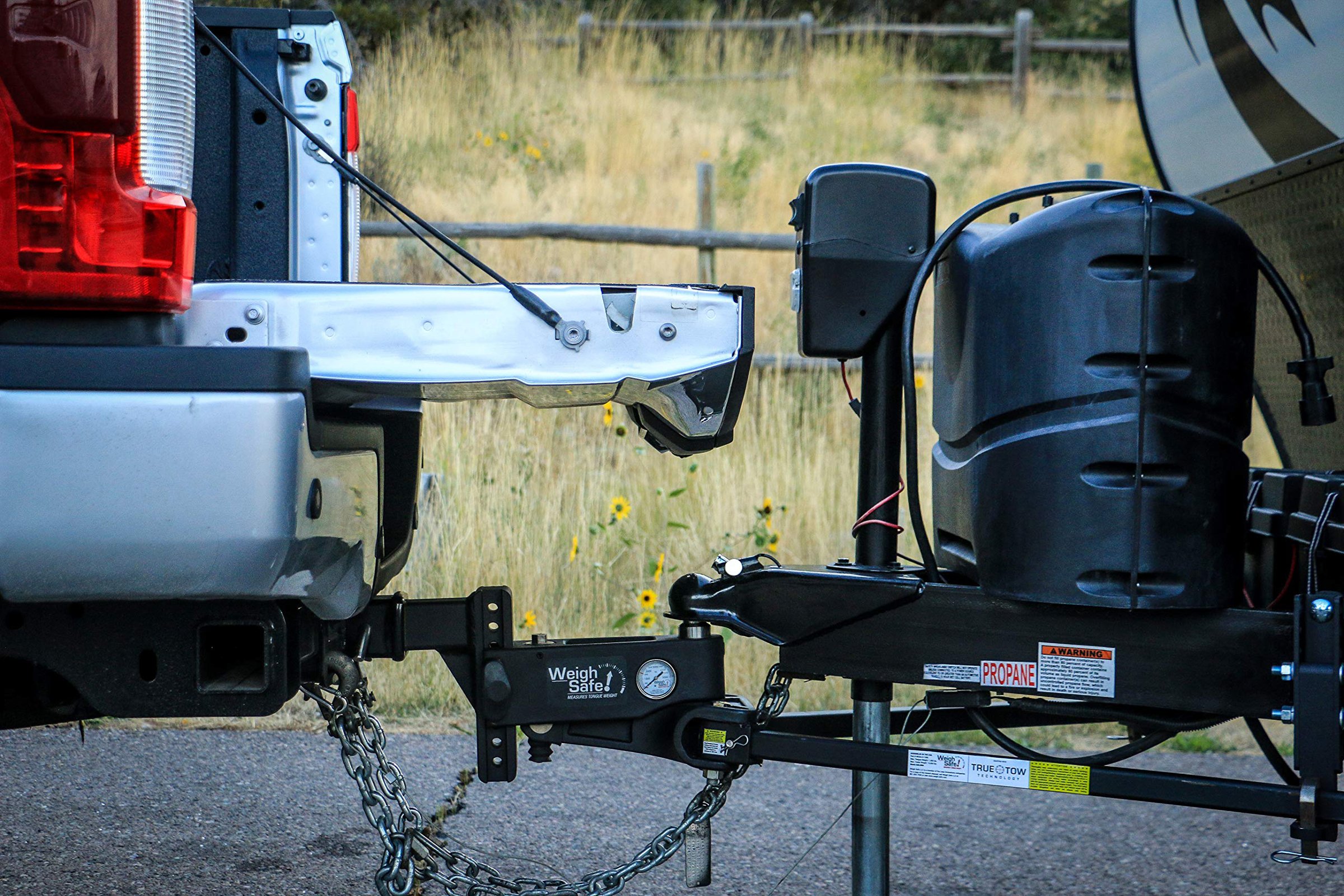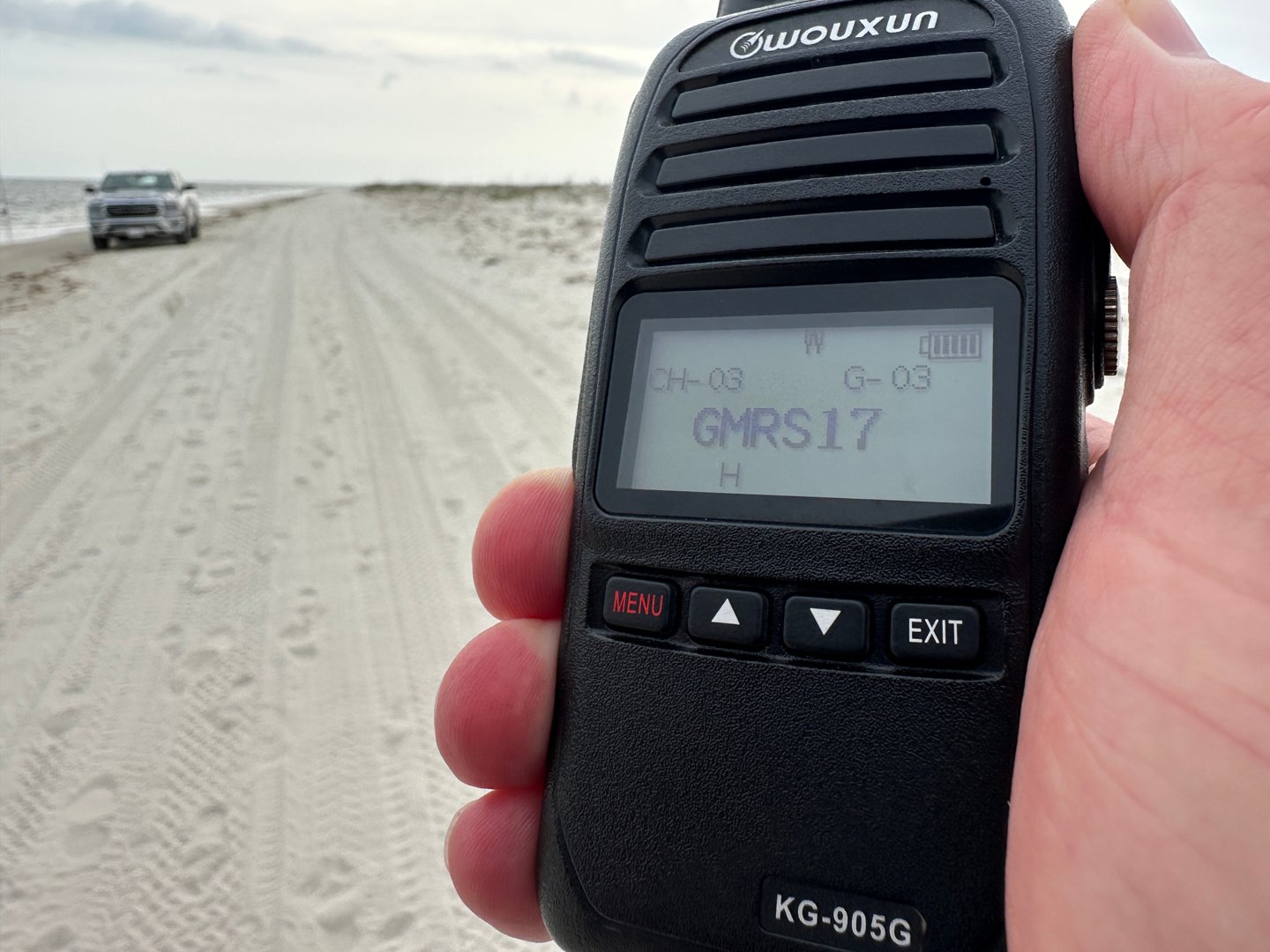You need three things to make an engine run – fuel, air, and spark.
Modern ignition systems are pretty straightforward, and air is in great supply unless you are on the highest of mountain passes. Fuel is usually taken for granted, but the part of the combination that we interact with the most. It’s so simple to just pull up to the pump and fill your tank, but what if you had to build your own fuel delivery system from scratch? That’s the dilemma I was faced with when constructing my overland vehicle.
There are many options available for fuel tanks. Manufacturers like Titan Fuel Tanks have high-capacity tanks, but due to regulations, most offerings are for diesel only. I have a gasoline engine, and wanted extra capacity to increase my range. I could not find anything “bolt-on” that would fit my application. The more research I did, the more I learned about the necessities and options that exist. Fuel management is critical for several reasons. One is reliability, the other is safety. You don’t want to scrimp on either one.
Tanks For Everything
Some of the factors you need to take into account when selecting a tank are structure, mounting, and cost. The properties of the different materials will play a part in what you select. If you will be running a long tank between the frame rails like I did, you might want to use plastic, since it is flexible. Let’s look at the several materials typically used for tank construction and how they are affected by those three factors.
Steel and aluminum have been used by manufacturers for years. They are both durable with aluminum being lighter. Both steel and aluminum do not like to flex, and they dent when they come into contact with rigid objects. Anyone who has restored an old car knows that one of the first things to do is check the steel gas tank for rust. Factory tanks are usually created by forming the steel with specialized tooling. Aside from spun aluminum tanks, most aftermarket tanks are fabricated with conventional sheet metal tools. They are bent, and welded. That means they are boxy with square edges. They don’t always fit in the same place where a factory tank once sat because of contours and bends in factory frame rails.
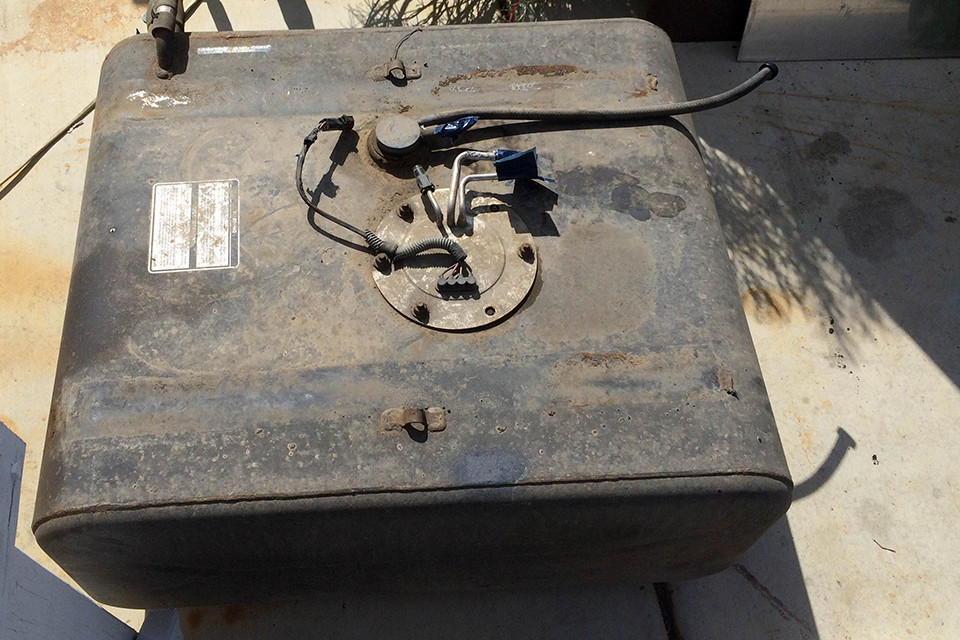
Sometimes there is a factory option for a larger fuel tank that will fit in the stock location. One example is this 36-gallon tank that fits an OBS F-series truck. You should never weld or cut on a tank that has fumes present, as they are highly combustible.
One trick to increase capacity is to find a larger factory tank that was designed as an option for your vehicle. Chances are it will bolt right in using factory mounts. Steel and aluminum tanks will hold the weight of the fuel without deforming. That means they can be suspended by straps running underneath. As long as safe practices are observed, steel and aluminum tanks can be easily repaired and modified.
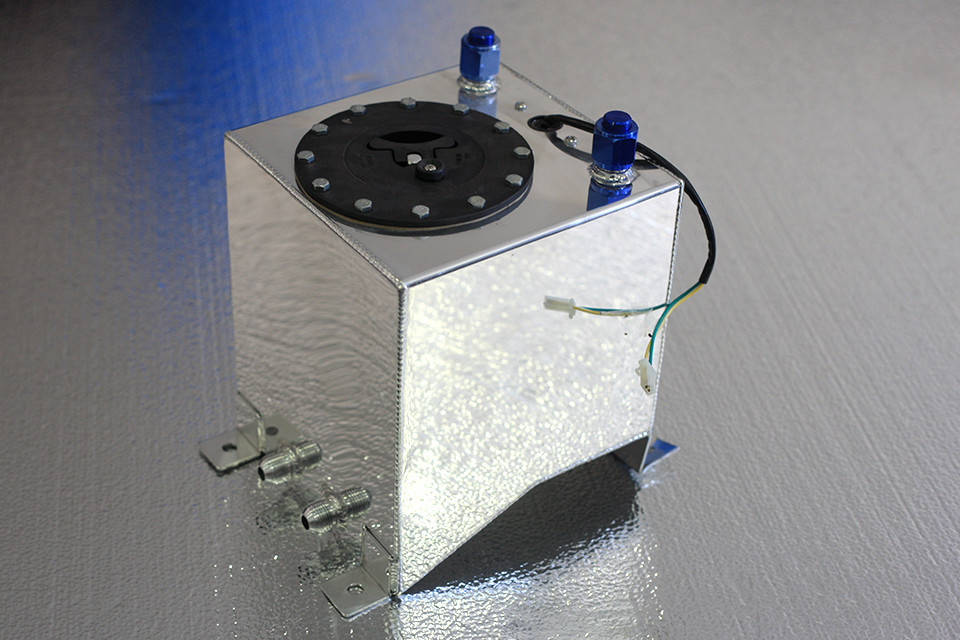
If you are running a thirsty engine or just want additional fuel when running at extreme angles, you can add a small surge tank that will insure your engine will not be starved for fuel.
Plastics, Polyethylene, and Nylon
While some tanks use a compound similar to what we consider plastic, the actual materials vary depending on manufacturer. Some tanks use an outer layer of XLPE, with a nylon inner layer to work with ethanol fuels. The interesting thing about plastic tanks is that they can be molded into unique shapes. Many factory trucks now use plastic tanks, and they are molded to follow the numerous irregularities on the underside of the vehicle.
Plastic tanks expand and contract with temperature and need to be well supported. They are flexible and lightweight, but they are not easily modified. Plastic tanks can come “natural” or in several colors, but one thing to be aware of is that natural-colored tanks are translucent. This is bad, since fuels exposed to sunlight can cause mold to grow. Thus, natural tanks need to be shielded from sunlight, while colored plastic tanks are fine.
Fuel Cells
Fuel cells, typically used in racing, are constructed from a flexible bladder, and are contained in a box or “can.” The bladder holds the fuel and the can protects it. Any hit to the can that would cause damage will be absorbed by the flexible bladder inside, since it will conform to the new shape without rupturing. Fuel cells are very safe but, due to their custom nature and the specialized materials used, can be expensive.
These custom Pyrotect racing cells were designed to fit in a particular spot on a race car. On the left you see the flexible bladder that is inside the fabricated can.
Mounting and Baffling
Regardless of the material you choose for your tank, it will need to be securely mounted. Fuel weighs over six pounds per gallon, and it is a dynamic load; the fuel moves around in the tank, causing the weight to shift. That’s why it’s a good idea to keep the tank mounted low, and centered on the chassis.
Some tanks have an internal structure, called baffling, that helps to reduce the movement of the fuel inside. Baffles are plates that restrict the fuel from sloshing, but have openings near the bottom of the tank to allow the fuel to flow between them. Flexible fuel cell bladders use special foam to accomplish this, so it remains flexible. However, baffled tanks are more expensive due to the additional labor and cost of materials used.
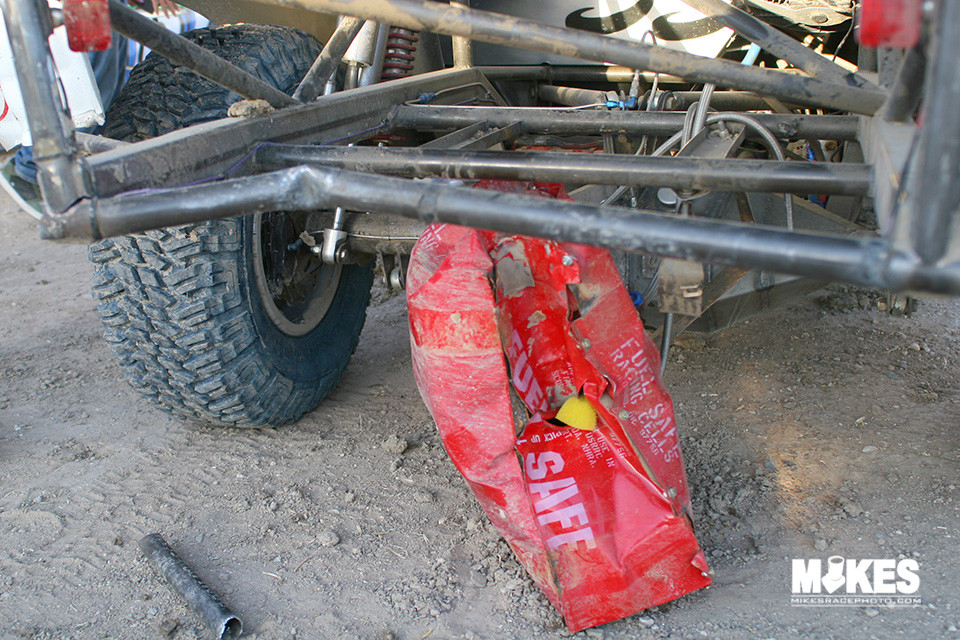
This fuel cell was entirely mangled in a wreck, but did not catch fire due to the bladder and internal foam.
Internal Pumps
Your tank will also be configured to work with the style of pump you will be using. Pumps come in variations of two basic styles; internal or external. Internal pumps sit inside the tank. They usually drop in from the top of the tank and push fuel up and out. Since they push the fuel out the top, there are no openings on the bottom of the tank to leak. From a safety standpoint it’s a bonus.
Internal pumps also benefit from being suspended in the fuel when it comes to noise and vibration. Sitting inside the tank helps to reduce both. The downside is when the pump fails. Since the pump drops in from the top, the tank usually needs to come out in order to replace it. This is not easy to do on the side of the road. People have been known to cut access holes in floors or truck beds in order to gain access, but depending on the vehicle, this might not be an option.
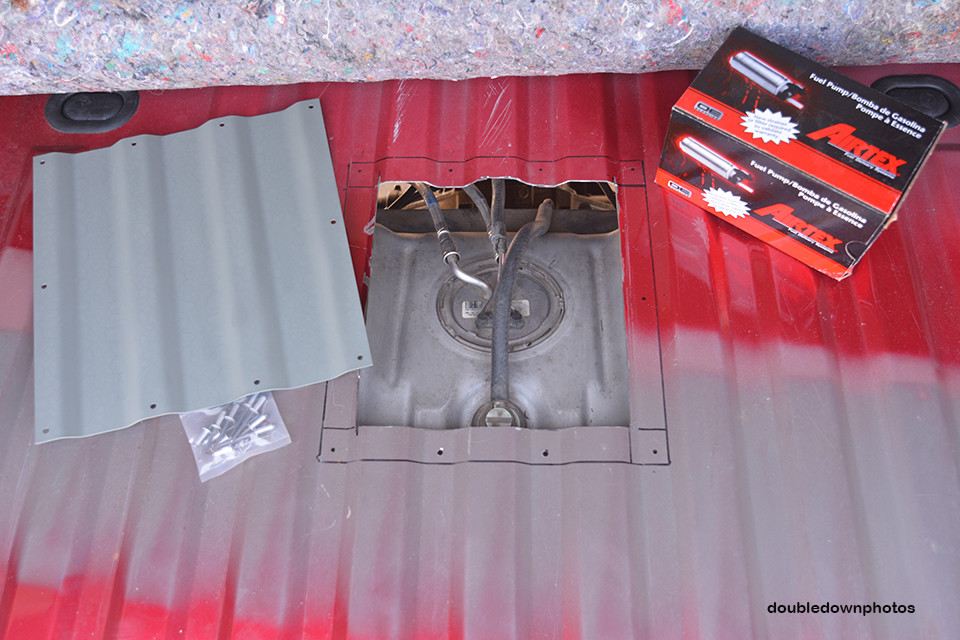
Solo Motorsports makes a kit to put a removable plate in the floor of your 1987-96 Ford Bronco. This makes it so you don’t have to drop the tank to change the fuel pump.
External Pumps
Older engines may have a mechanical fuel pump mounted to the engine, but we will focus on electric pumps. Tanks configured for external pumps typically have fittings at the bottom of the tank; they use gravity to supply the pump with fuel. External pumps are noisy and they vibrate. The noise can be loud, and annoying to some. It’s best to mount them with some type of damping mount made of rubber or urethane so the vibration is not transferred to the chassis.
It is possible to draw fuel up through the top of a tank with an external pump, but pumps push fuel much easier than they pull. You have the possibility of the fuel line draining back into the tank causing the pump to suck air. Fuel pumps rely on the fuel to cool and lubricate them; running them dry causes premature failure.
Not only do most tanks deigned for external fuel pumps draw from the bottom, but they might also incorporate a sump. The sump is a chamber that sits below the bottom of the tank so that gravity pulls the fuel into the sump. If the fuel in the tank is low and moves front to back or side to side, since the sump is the lowest point, the fuel trapped inside will supply constant fuel to the pump. Tanks can also be designed in a wedge shape so that as the fuel gets low, it settles towards the sump. A narrow tall tank will concentrate the fuel in a smaller area. A short and wide, or long tank is more susceptible to fuel starvation without a sump. Running the tank at an angle, like when traveling off-road, will cause the fuel to flow to the lowest point, which might not be where the fuel fittings are located.
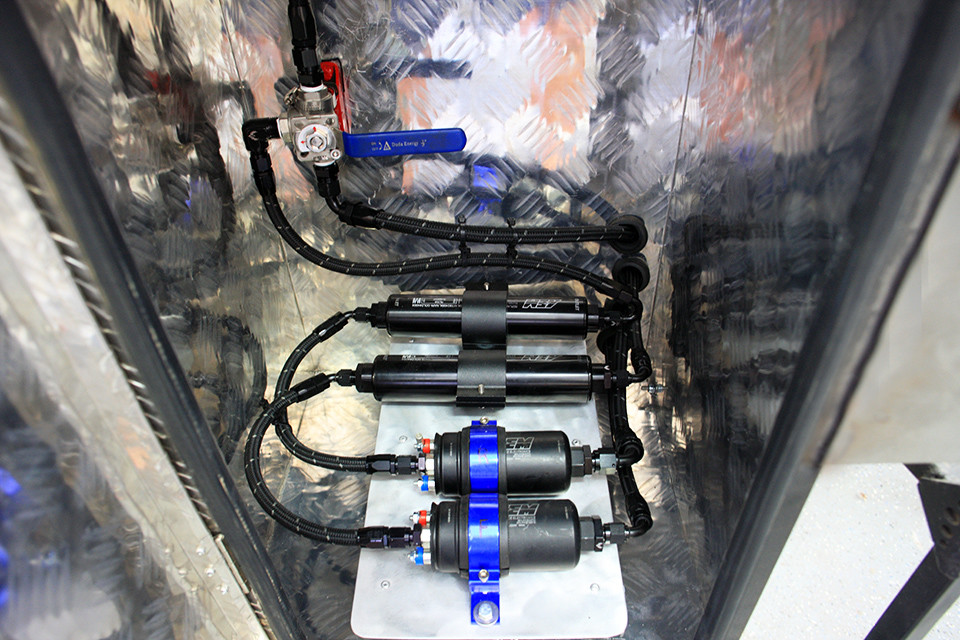
Here, we see external pumps and filters mounted to a plate with rubber isolators underneath to reduce vibration.
Feed Your Motor
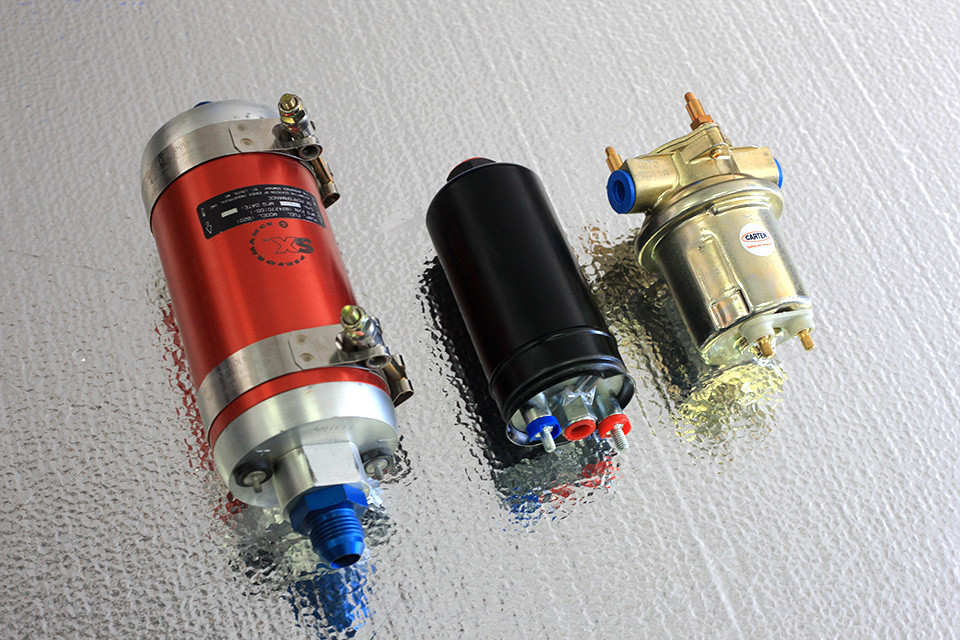
An assortment of fuel pumps. A carbureted Carter on the right, AEM 400LPH High Flow, High-Pressure Fuel Pump in the middle, and the SX Performance pump on the left. That compact AEM pump in the middle is capable of supporting over 1,200 HP normally aspirated and a whopping 860 HP at 30 psi boost!
Once you have determined the type of pump you will use, and therefore the tank, it is necessary to match the fuel pump to your engines demands. Carburetors have a float, needle, and seat that can be overwhelmed if too much fuel pressure is present. You will need a pressure regulator to control it. You will also need to consider fuel volume. If you are running a dual carb setup, you might not need high pressure, but you need enough volume to satisfy both carbs. This is where the proper fuel line diameter comes into play.
Think of how your garden hose supplies low pressure but high volume at the same time. That’s why your garden hose is one inch in diameter. Fuel injection requires higher pressures in order to push the fuel through the injectors. The engine configuration will still play a part in the size and pressure of the pump you will need. A stock six-cylinder engine will require much less volume than an 800hp V8. Luckily, there are fuel pumps available for the full range of requirements.
Filters
The next thing you need to be concerned with is a clean fuel supply. Like fuel pumps, filters come in all different sizes and configurations. Some even separate water from the fuel, which is important if traveling in wet climates where condensation is prevalent. Filters are designated by the size of particle that will pass through them using the micron for measurement; as an example, a single grain of table salt measures 149 microns. Generally speaking, filters mounted upstream from a fuel pump should be no finer than 75-100 microns; filters for carburetors 40 microns, 10 microns for manifold injectors, and only 5 microns for direct injectors. It’s important that you don’t restrict the flow too much to a pump so that it doesn’t overheat. For the rest, you want to make sure enough filtering takes place so you don’t clog the tiny orifices.
Venting
In order for any pump to draw fuel from the tank, it needs to be vented. You also need to allow air to escape while filling. Race vehicles vent to the atmosphere, and use check valves that close if the vehicle turns upside down. Production vehicles are more sophisticated. They have a system that captures the fumes, and then sends them into the combustion chamber to be burned. My system uses a part designed for boating. The Perko air-fuel separator allows any fuel forced into the vent tubes to settle back into the tank. It also has a rollover valve that closes when inverted. It has provisions for two tanks, and I routed the vent tube to the factory charcoal canister.
This Perko fuel separator allows the fuel tanks to vent properly and also performs like a rollover valve. On the right are a sample of the Pyrotect rollover valves that are available.
Senders And Gauges
You will need some type of gauge to let you know how much fuel you have on board. There are a couple types of senders. One type uses a float attached to the end of an arm. The float does just that – it floats on the surface of the fuel. As the level goes up or down, the arm does the same, sending a signal to the gauge. Another style, prevalent on boats because it is less affected by movement, is the reed switch style. It also has a float, but the float slides up and down on a shaft. The float is magnetized and creates a signal as it slides over the shaft. Both styles operate at a particular ohm range. The ohm range of the sender needs to match the gauge. For instance, 1987 and newer Ford senders operate from 16 ohms empty to 158 ohms full. 1998 and up GM senders operate at 40 to 250. Some aftermarket senders use an ohm range of 33-240. If you are using a factory gauge it has to work with the sender. Some aftermarket electronic gauges can be programmed to work with several ohm ranges.
Fuel senders come in different styles. If you are running baffles or foam inside, you'll probably want to use the reed switch style. It’s important to match your fuel gauge to the ohm range of your sender. These electronic Prosport gauges (right) have a great feature allowing for ohm range adjustment.
Safety Concerns
Electric fuel pumps will run as long as they have power. Even in a crash, they can continue to pump fuel, which makes them a fire hazard. Fortunately, master cut-off switches can be wired up to kill all power to the vehicle and stop the pump from working. Another option is the inertia switch that came on mid-90s Ford vehicles. It is a mechanical switch that shuts off when subjected to a substantial G-force. There is a small pellet that sits in a recess that completes a circuit. When the switch is jarred hard enough to dislodge the pellet, the circuit is broken and the pump shuts off. There is a reset button on the outside that pushes the pellet back into the recess to reset it. It’s cheap insurance if you want to install one in your system. Many late model vehicles with fuel injection have similar devices that are programmed into the Electronic Control Module. The Ford unit is standalone, so it’s easy to incorporate it in your system.
Make sure you don’t scrimp on the wiring. Use the appropriate gauge wire and include relays, breakers, and a manual shutoff switch for safety. A factory Ford inertia switch can shut your fuel pump down when in an accident. You can also run a manually operated ball valve, or normally closed solenoid valve. If power is shut down to the solenoid, it automatically closes.
Fuel Lines And Fittings
Never scrimp when it comes to fuel lines. Make sure you have quality hose that is designed for fuel. Vacuum line or heater hose is not the same. I went with AN fittings and top-quality hose in my system because I wanted peace of mind. Make sure any lines you run are protected from sharp objects, abrasion, and heat sources. If the fuel gets too hot, the liquid fuel will turn to a vapor and you will have vapor lock. A trick we used to do was to wrap the fuel line around the AC condenser. On hot days, you will be running the AC, and the condenser gets very cold, chilling your fuel.
I chose to run race-quality hose and aircraft fittings for safety and reliability. The new system taps into the factory hard lines.
Factory fuel systems are safe, and reliable, but they do have some drawbacks. If you want extra capacity, you might need to add an additional tank or swap out the existing one. Make sure you design a safe system that will provide the extra fuel you need without causing an unsafe condition. You will have a huge smile as you travel deep off the beaten path with your new reliability, and extended fuel range.

